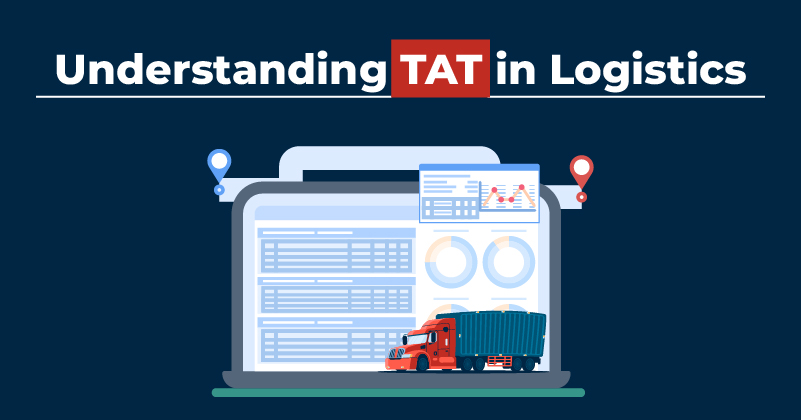
In the fast-paced world of logistics, time is money. Turnaround Time (TAT) plays a crucial role in ensuring the smooth functioning of supply chains worldwide. Understanding TAT in Logistics is essential for companies striving to maintain efficiency and meet customer demands. In this blog, we’ll delve into the intricacies of TAT, focusing particularly on transit time, its importance, and strategies for optimization.
What is TAT?
TAT stands for Turnaround Time. It refers to the total amount of time taken for a process to be completed, from the moment it begins to the moment it is finished and ready for the next step or delivery. In the context of logistics, TAT often encompasses the entire process from receiving an order or shipment to its fulfillment and delivery to the customer. It includes various stages such as processing, transit, and delivery times, and it is a crucial metric for evaluating the efficiency and effectiveness of logistics operations. Efficient management of TAT is essential for meeting customer expectations, optimizing supply chain processes, and ensuring timely delivery of goods.
Understanding Transit Time
Transit time forms a significant part of TAT. It refers to the duration taken for goods to move from the point of origin to the final destination. Several factors influence transit time, including distance, transportation mode, customs processes, and external factors like weather conditions.
Calculating transit time requires a nuanced approach, considering various parameters. While manual methods are still prevalent, technology solutions and tracking systems provide more accurate and efficient calculations, enabling better planning and management.
Role of Transit Time in Supply Chain Management
Transit time directly impacts supply chain efficiency and customer satisfaction. Meeting customer expectations regarding delivery timelines, managing inventory effectively, and optimizing supply chain processes are all contingent on transit time management. Moreover, it influences cost management and budgeting, making it a critical aspect of logistics operations.
Strategies to Improve Transit Time
Companies employ various strategies to enhance transit time and overall TAT. Route optimization, careful carrier selection, and network optimization are key tactics. Integration of technology solutions like GPS tracking and real-time visibility platforms enables better monitoring and management of transit times. Collaboration and communication with partners and stakeholders further contribute to streamlining operations.
 Example of TAT Optimization
Example of TAT Optimization
Examining real-world case studies provides valuable insights into effective TAT optimization strategies. For instance, Company X’s implementation of route optimization software significantly reduced transit times and improved efficiency. Similarly, partnerships between companies and third-party logistics providers have yielded positive results in optimizing TAT. Leveraging IoT and sensor technology has enabled real-time tracking and monitoring, further enhancing transit time management.
Future Trends and Innovations in Transit Time Management
The future of transit time management looks promising with advancements in technology. Predictive analytics and machine learning hold immense potential in forecasting transit times accurately. The adoption of autonomous vehicles and drones for last-mile delivery is expected to revolutionize logistics operations. Blockchain technology offers enhanced transparency and security, while sustainable practices align with green logistics initiatives, shaping the future of transit time management.
Conclusion
In the dynamic world of logistics, Turnaround Time (TAT) stands as a pivotal measure of efficiency and customer satisfaction. From the moment an order is received to its final delivery, every minute counts. By understanding the nuances of transit time and its significance, companies can unlock opportunities for optimization, cost savings, and improved service quality.
Looking ahead, the future of TAT management is intertwined with technological innovation. TMS-Digital, a leading TMS and logistics software provider in the US, exemplifies this trend. Through their cutting-edge solutions, such as advanced route optimization algorithms and real-time tracking capabilities, TMS-Digital empowers businesses to streamline operations, enhance visibility, and meet the ever-evolving demands of the market.
As we navigate the complexities of modern logistics, it’s clear that TAT optimization is not just a goal but a necessity for success. By embracing innovation, collaboration, and continuous improvement, companies can chart a course toward greater efficiency, resilience, and customer satisfaction in the logistics landscape.
Ready to optimize your logistics operations and improve your Turnaround Time? Contact TMS-Digital today to explore how their innovative solutions can drive efficiency, visibility, and growth for your business. Unlock the power of technology to transform your logistics performance and stay ahead in today’s competitive market.









